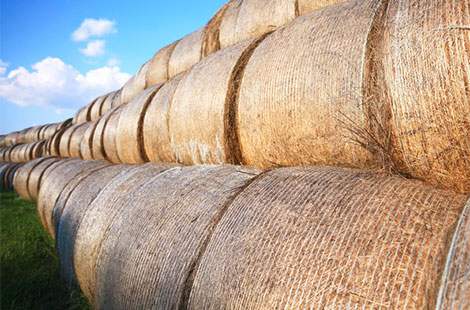March 14, 2017

Extension regional program director Danny Nusser encourages producers who suffered damage from wildfires to come and get hay from three Livestock Supply Points.
“Come get it or let us know you need it and we will deliver it, or let us know your neighbor needs it and we will get it to them,” said Danny Nusser, Texas A&M AgriLife Extension Service regional program director in Amarillo.
Nusser said the three Livestock Supply Points set up by AgriLife Extension have plenty of hay for everyone who might have been affected by the wildfires that ripped through the Texas Panhandle on March 6 and continued for days. Efforts are beginning to shift away from hay collections and toward fencing and longer-term needs.
“If we see there is a need for more hay, we have lists of individuals just waiting to be called and eager to help,” Nusser said. “We have people on our list who are offering acreage for grazing for anyone who needs to move some cattle for a few months.”
The outpouring of aid has been overwhelming, he said. From volunteers donating their time to people sending truckloads of feed and hay from halfway across the nation, the response to this crisis has been tremendous.
“Now our focus is to get the donated material out to the ranchers and their livestock,” Nusser said.
Shifting focus
Mike Jeffcoat, AgriLife Extension agent in Gray County, said with about 5,000 bales delivered or in supply, “We are asking producers who are thinking about donating to shift that thought process away from immediate needs and to start thinking about fencing and the long-term now. We are going to reevaluate where we are with our hay in the middle of the week.
Nusser said beyond finding secure locations and feed for their cattle, ranchers need to make sure they are documenting their dead cattle numbers and begin getting that information to the proper agencies to ensure they qualify for assistance in the future.
Documenting the number of dead cattle is the biggest issue facing ranchers and government agencies trying to get financial assistance for those hit hardest by the recent wildfires, he said.
“It’s a continuously changing story on what needs to be done and what is being done day-to-day, especially since the fires continued in some areas for multiple days,” Nusser said. “Now with the fires out and decisions being made about where to go and what to do with the cattle, these ranchers need to be aware of what is required of them.”
Ranchers must follow the guidelines of the Texas Commission on Environmental Quality for burying any dead livestock, he said. It is important those individuals have a third party witness the burial to help document the number of dead animals. If more than 10 head are buried in a single location, a record must be in the deed.
The complete rules can be found http://www.tceq.texas.gov/.
Ranchers need to document whether cattle were sent to the renderer or packer or were buried, Nusser said. Documentation will be needed two or three months down the road when applying for aid from potential future government emergency relief funds.
The most important thing needed in the near term is for ranchers with losses to make contact with the FSA office and get protocol and directions, he said.
“This needs to be done within 15 days for some programs and 30 days for other, so call your FSA office as soon as you can.”
This information is a critical best management practice that needs to be documented for income tax and any potential government financial assistance in the future. The numbers need to be documented for county purposes, whether the individual intends to seek financial assistance in the future or not, he said.
Some of the programs being considered:
Emergency Conservation Program, a cost-share program that will help restore fences and some structures that were burned. It may be several months before a rancher would see any money from it.
Livestock Indemnity Program, which basically pays for losses of livestock, will take time also. Ranchers are advised to keep good accurate records and have a third party witness any death loss.
Environmental Quality Incentive Program funds also could be used to rebuild some of the infrastructure once the perimeter fences are built and possibly for some grazing deferment.
“The FSA offices need to know how much fence in terms of miles will be needed,” Nusser said. “Also, how many dead animals do we have out there. The closer we get to reality, the better argument we can make.”
“My recommendation is to go to your local NRCS/FSA office and turn in the information about what your losses are,” he said. “That way we can get a true handle on the situation. Communication and accuracy is key to requesting support.”
Source: AgriLife Today
You May Also Like




